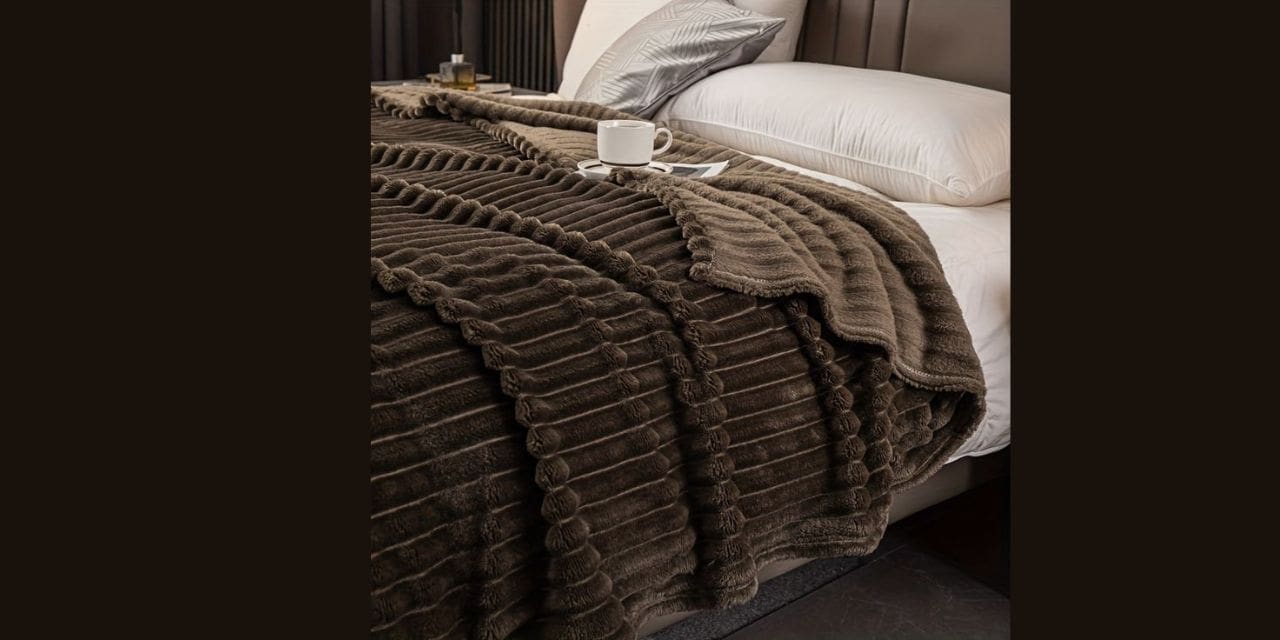From Raw Materials to Consumer Delivery
By Tanvi Munjal
The product value chain of blankets encompasses the various stages involved in the production, distribution, and sale of blankets, from raw material sourcing to the end consumer. Understanding this value chain is crucial for manufacturers, retailers, and stakeholders in the blanket industry, as it highlights opportunities for efficiency, cost savings, and market differentiation.
INTRODUCTION
The blanket market is a significant segment of the global textile industry, valued at approximately USD 15.07 billion in 2023, with projections indicating growth at a compound annual growth rate (CAGR) of 6.45%, potentially reaching nearly USD 23.34 billion by 2030 (Source: Blanket Market: Global Industry Analysis and Forecast (2024-2030)). This growth is driven by various factors, including evolving consumer preferences for comfort, technological innovations in textile production, and increasing awareness of health benefits associated with quality sleep.
As the market expands, understanding the product value chain becomes essential for manufacturers and retailers to enhance their competitive advantage. The value chain includes several key components: raw material sourcing, manufacturing processes, distribution channels, marketing and sales strategies, and customer service. Each stage contributes to the overall value delivered to consumers, influencing their purchasing decisions and brand loyalty.
ABOUT PRODUCT
| Product Name | Blankets |
| Brief About It | Blankets are versatile fabric coverings designed to provide warmth and comfort. They are made from a variety of materials, including fleece, wool, cotton, and synthetic fibres, catering to different preferences and uses. |
| Category | Home Textiles |
| Benefits | The benefits of blankets vary by type but generally include:
Thermal Insulation, Anxiety Relief, Improved Sleep Quality & Versatility |
| Application Industry | Blankets find applications across various industries, including:
Healthcare, Home Goods, Hospitality, and Outdoor Recreation. |
| Duration Of Product | The lifespan of blankets varies significantly based on material and usage, typically ranging from 3 to 10 years. High-quality blankets, particularly those made from durable materials, can last longer with proper care. |
PRODUCTION PROCESS
The production process of blankets involves several stages, each utilizing specialized machinery to ensure efficiency and quality. Below is a detailed overview of the various steps in blanket manufacturing, the machines used at each stage, and notable brands that manufacture these machines.
1. Sourcing Raw Materials
The first step in blanket production is sourcing raw materials, which can include various fibres such as polyester, cotton, or wool. For instance, Creswick Woollen Mills sources graded merino wool fibres for their products.
2. Carding
Once the raw materials are selected, they undergo carding, where a carding machine is used to mix and prepare the fibres for spinning. This process ensures that the fibres are aligned and ready for the next stage. Notable brands that manufacture carding machines include Truetzschler and Schlafhorst.
3. Spinning
The carded fibres are then spun into yarn using spinning machines. This process twists the fibres together to form a continuous thread. Leading manufacturers of spinning machines include Rieter and Saurer.
4. Knitting or Weaving
The spun yarn is either knitted or woven into fabric. For knitted blankets, circular knitting machines are employed, while woven blankets use looms. Brands like Shima Seiki are known for advanced knitting machines, while Toyota and Picanol are recognized for their weaving technology.
5. Raising and Finishing
After knitting or weaving, the fabric undergoes a raising process using raising machines, which brush the fabric to create a soft texture. This is followed by finishing processes that may include washing, dyeing, and applying treatments to enhance durability and appearance. Companies like Kusters and Bühler manufacture finishing machines that are widely used in the textile industry.
6. Cutting
The fabric is then cut into the desired blanket sizes. This can be done using manual methods or more advanced semi-automatic cutting machines. Brands such as Gerber Technology produce cutting machines that enhance precision and efficiency in fabric cutting2.
7. Sewing and Hemming
After cutting, the fabric panels are stitched together using various sewing machines, including overlock and flatlock machines. Notable manufacturers of sewing machines include Brother, Juki, and Bernina. These machines ensure that the edges are hemmed properly for durability.
8. Quality Control
Quality checks are conducted throughout the production process, including inspections for fabric faults, measurements, and overall appearance. This step is crucial to ensure that the final product meets customer specifications and industry standards.
9. Packaging
Once the blankets are completed, they are folded, pressed, and packaged, often in waterproof materials to protect them during shipping. Packaging machines from companies like Packsize and Ishida are commonly used in the textile industry for efficient packaging solutions.
INDUSTRY OUTLOOK (TOP BRANDS)
| Worldwide | India |
|
|
SWOT Analysis
Strengths
- Large and diversified domestic market with a high potential for growth
- A wide variety of blanket products are available due to diverse cultures and low capital investment
- Flexible production capabilities and low barriers to entry
- Potential to generate significant foreign revenue through exports
Weaknesses
- Lack of infrastructure, communication facilities, and coordination between government bodies and private players
- Declining interest from younger generations in the craft industry
- Shortage of skilled labour
- Limited geographic reach, only operating in two regions due to high costs of expansion
Opportunities
- Emerging global trends show increasing demand for smart blankets, especially in regions like Europe, South America, the Middle East and Asia
- Growth of the online market provides an opportunity to sell products globally with ease
- Potential to expand operations and offer specialized products to capitalize on industry growth
Threats
- Highly competitive industry with established, financially stable competitors
- Financial difficulties due to reliance on debt financing
- Prices of raw materials and finished goods tied to volatile international petrochemical prices
- Potential impact of free trade agreements on tariffs and international competition
In conclusion, the blanket product value chain reflects a complex interplay of innovation, consumer demand, and sustainability efforts, positioning manufacturers to meet the evolving expectations of a conscientious market.

